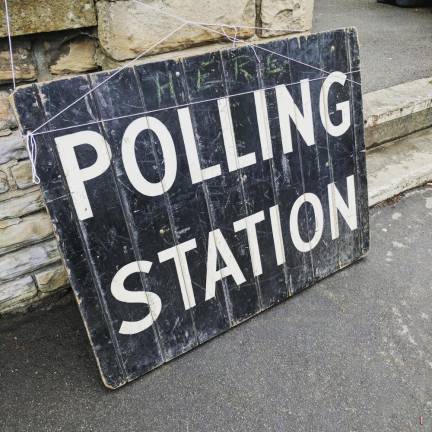No, Pennsylvania didn’t send 255K ballots to `unverified’ voters

The facts: The state didn’t send out that many ballots to unverified voters. This claim misrepresents a figure in a state database, which does not mean that the voters failed to provide correct identification information, nor that their identities weren’t ultimately verified. Social media posts and headlines promoted the false claim that Pennsylvania officials had issued around a quarter-million ballots to people whose identities weren’t confirmed.
“Crisis in Pennsylvania - 255,000 unverified new voters sent ballots - Candidates better contact their lawyers,’’ read an Oct. 26 headline from the website The Gateway Pundit. The story claims that this ``is how Democrats cheat.’’
The story cites an Oct. 25 letter from Republican state lawmakers to the Pennsylvania secretary of state, which claimed the state had issued ``over 240,000 unverified ballots.’’ A day earlier, an elections investigation group called Verity Vote issued a report making similar claims, citing a state database as evidence.
But officials in Pennsylvania say the claim flagrantly misrepresents the way that the state classifies applications for mail-in and absentee ballots.
``There are not 240,000+ `unverified ballots,’ as certain lawmakers are claiming,’’ Pennsylvania Department of State spokeswoman Amy Gulli said in a statement provided to the AP. In Pennsylvania, those applying for mail-in or absentee ballots must provide proof of identification _ such as state driver’s license information or the last four digits of their Social Security Number. In some cases, a voter’s identifying information is automatically verified, including by cross-referencing it with Pennsylvania Department of Transportation data.
However, in other cases, the voter’s identifying information must be vetted further. When that happens, the application enters the statewide system under a designation labeled ``NV,’’ or ``not verified.’’ Notably, the ``not verified’’ designation doesn’t mean the voter didn’t provide accurate identification information, nor does it mean their ID wasn’t later verified. ``The code does not reflect the results of any identification check but is, in fact, an additional mechanism to ensure that counties are properly verifying ID provided by voters,’’ acting Secretary of State Leigh Chapman wrote in an Oct. 28 response letter to the Republican lawmakers.
Chapman added that the ``NV’’ status can also be applied to applications of voters who request to permanently receive mail-in ballots so that verification occurs for every election in which the ballot is issued. If a voter’s identification can’t be verified at the time they apply for a ballot, state law does require that the voter still be issued a ballot and be provided an opportunity until the sixth day after the election to provide the proper proof of identification. But counties are not to count the ballot unless the voter provides proof of identification.
There are currently about 7,600 ballot applications in Pennsylvania that still require identification verification, according to the Department of State. Election officials use high-tech equipment that sorts out ballots that arrive but are still pending verification, said Al Schmidt, president and CEO of the Committee of Seventy, a nonpartisan group.
``That vote won’t be counted unless the voter does what’s required _ which is just to verify their ID,’’ said Schmidt, a former Philadelphia city commissioner. Verity Vote argues all verification should occur before a ballot is issued. ``It seems reckless in the modern era, to send a ballot based on an unverified mail ballot application with the intention of verifying later,’’ the group said in a statement to the AP. The Gateway Pundit on Monday responded to an inquiry by forwarding responses from Verity Vote.